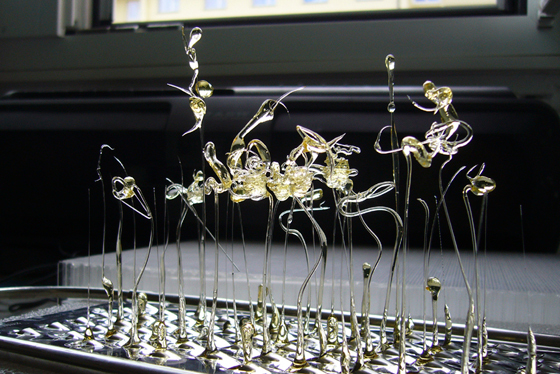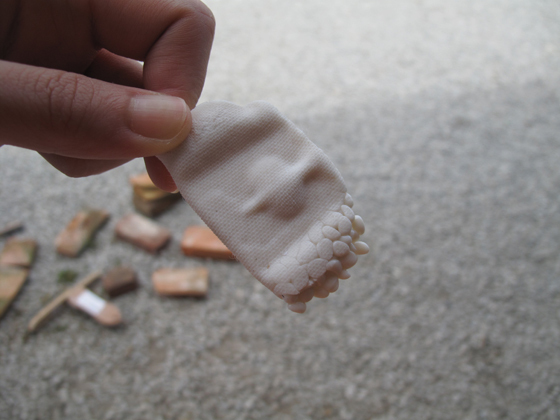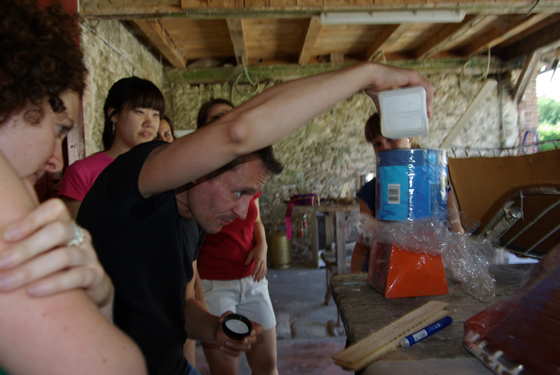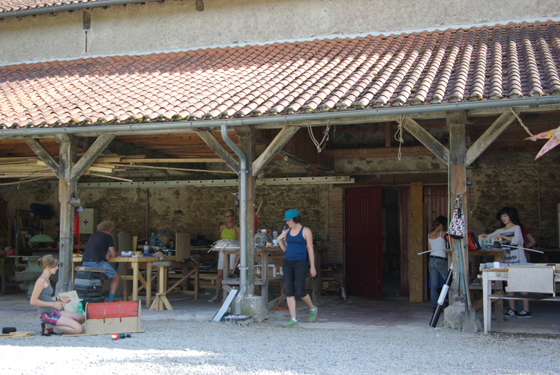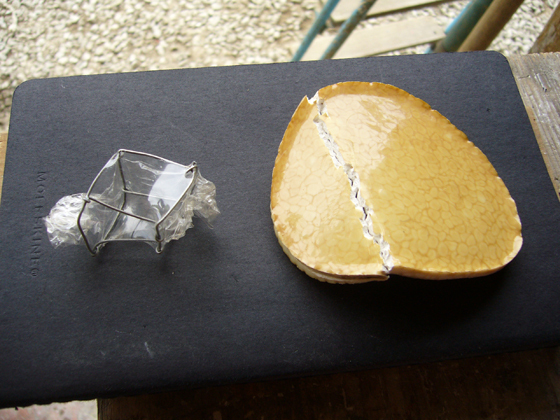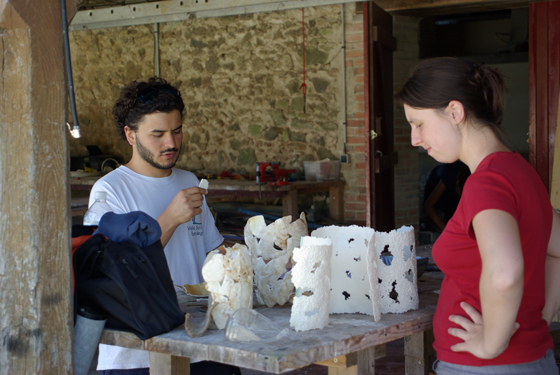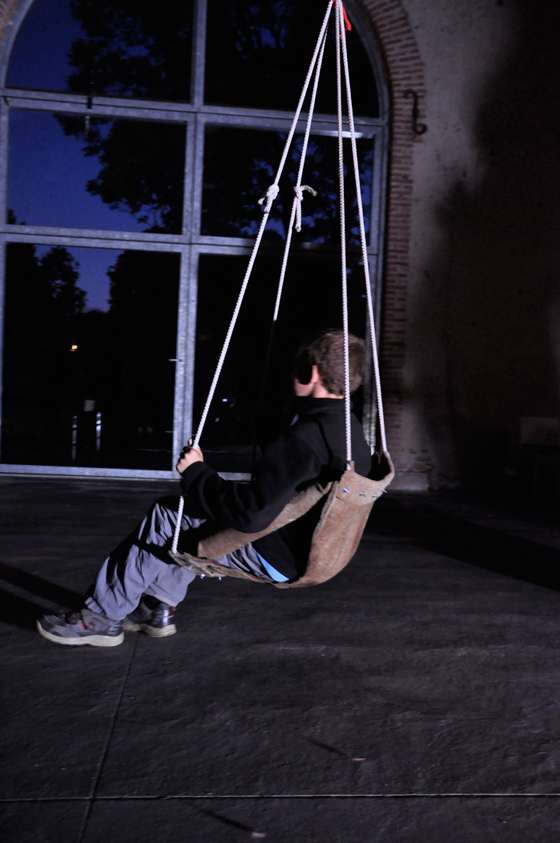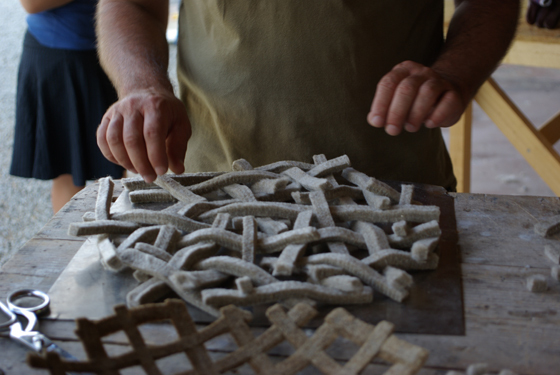Moulded Nature
Texto por Nora Schmidt
Berlin, Alemania
02.12.09
For years now international materials producers have been working on sustainable alternatives and they are now ready to launch biologically degradable plastics which can be used for a range of applications.
When half a century ago designers such as Verner Panton and Luigi Colani revolutionised people's living rooms with their brightly coloured plastic furniture it crossed nobody's mind that this wonder material that could be formed into any required shape would one day come to become a symbol of global rubbish and the ecological crisis.
Low-tech generation of bioplastics in Beat Karrer's studio in Zurich
However, there is hope: for years now international materials producers have been working on sustainable alternatives and they are now ready to launch biologically degradable plastics which can be used for a range of applications. The long-term aim is to create those everyday objects which nowadays consist of countless materials from as few components as possible in order to simplify recycling and accelerate the natural degradation process.
Bioplastic made of PLA granulate, at the Vitra Workshop in Boisbuchet
Just as with 'normal' plastics these bio-plastics also consist of countless chains of molecules, the polymers, which in turn are formed from a large quantity of basic components, the monomers. In contrast to synthetic polymers, which are produced from fossil raw materials, the term 'biopolymers' refers to the origin of the basic components for the polymers, which come from renewable resources. Biopolymers are composed of materials derived from living organisms - in other words plants, animals or bacteria. These can be starches from potatoes, wheat or maize, cellulose from vegetable cell walls or proteins such as silk, spider's webs or hair. The properties of the material are determined by the length and molecular structure of the chains. Depending on the manufacturing process and the formulation of the material they can be regulated and optimised by additives such as natural fibres. The variety of bio-plastics which have been tested is already impressive today.
Creating the material is one thing but finding applications for it is another, because the cost-intensive development of new production materials is only justified by their use in series production. This is where the skills of product designers and manufacturers come in – above all those who are aiming at greater things.
One of these is the Swiss designer Beat Karrer, who together with the biochemist Michael Kangas experiments with new possibilities for processing biopolymers. The low-tech experiments in their Zurich witches' kitchen produced promising results and these were quickly built on by cooperations with a number of materials producers and a research institute.
Beat Karrer during the Vitra Workshop in Boisbuchet
"Because we don't have the necessary equipment we tend to limit ourselves to basic research and feasibility studies, as well as testing new areas of application. If an idea functions in our studio we contact a possible project partner, present the proof of concept and then discuss further steps [...] As designers we translate the application possibilities of the materials into products which can be marketed. Design is a language which everybody understands", explains Karrer.
Vitra Workshop
This summer Beat Karrer devoted his second workshop at Boisbuchet in the south of France to this subject. 11 participants from 6 countries tested the properties of semi-finished products made of different biopolymers and analysed their areas of application. Even if for Karrer it is less the perfect product than boldness of approach which takes priority – the results are still surprisingly mature.
PLA granulate
PLA (polylactic acid) is one of the most important bio-plastics. It is generated by the polymerisation of lactic acid and is especially versatile. Because of its good thermoplastic qualities PLA is especially suitable for short-dated packaging, in other words thermoformed film and similar types of foil. Depending on its composition it can also be applied for long-life products.
In Boisbuchet the participants experimented with a PLA granulate which was made available by the firm of Fkur.
PLA fleece
This fleece can be bought ready for processing and consists of PLA-soaked coconut, sisal and/or hemp fibres. While the thermoplastic PLA determines the shape, the natural fibres serve to reinforce the material. During the workshop it was possible to heat the fleece, in contrast to the granulate, and then shape it into its final form.
-
-
-
The workshop was supported by:
Vitra Design Museum
Jakob Winter AG
Fkur
Bioresin
Support in the search for material sponsors: Melanie Gentzik
